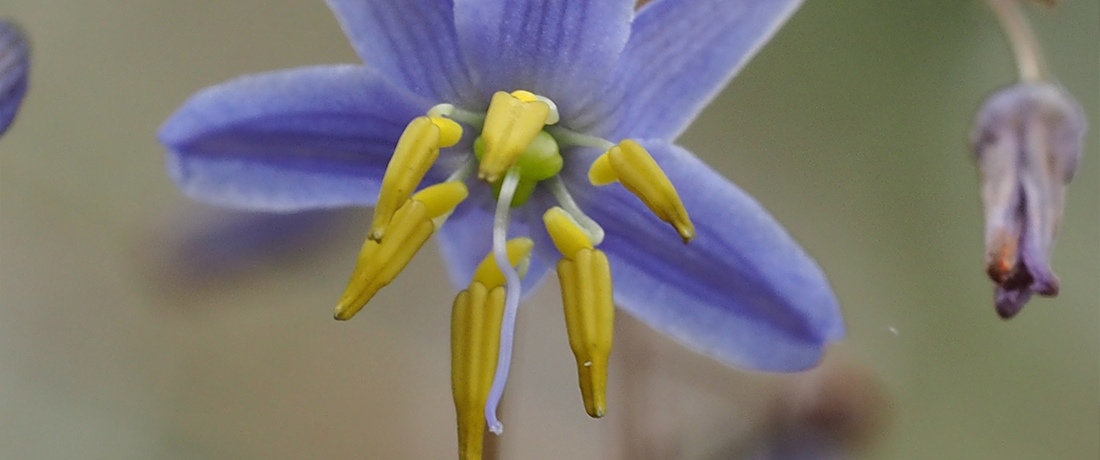
 Important note about plant availability. Important note about plant availability.There are hundreds of factsheets on our website provided for your information. Not all plants will be available at all times throughout the year. To confirm availability please call (03) 8850 3030 and ask for the nursery. |
Dianella longifolia var. longifolia syn. D. laevis
Apart from being a great landscaping plant, Dianella longifolia has an ornamental and edible berry. It is a tough, hardy plant that will add lovely blue-green upright foliage to the garden, as well as numerous blue and yellow flowers on tall stalks.
Three distinct forms of Dianella longifolia occur around Melbourne. In the west D. longifolia forms a tuft of blue grass that dies down in summer, while the form occurring in the foothills of the Dandenongs is green and persistent throughout the year. This is the form found commonly in nurseries. The Aboriginal people of Victoria used the leaves of Dianella for basket making.
It is important to correctly identify which Dianella you have before you consume the berries, as some are poisonous. In particular the berries of D. tasmanica, which generally carry much larger, more enticing looking berries! These will certainly give you a nasty tummy ache almost immediately. The edible berries of D. longifolia are much smaller by comparison. To this end it is recommended that you buy a labelled plant from a nursery if you are intending to eat the berries.
Dianella longifolia flowers between August and January, after which the berries form.
Cultivation
Dianella longifolia can be planted in full sun to part shade. Before planting, loosen the soil and add some organic matter. Provide them with water in their first summer, after which they should be able to live on the local rainfall if you have chosen a local form. If you have a pristine looking garden, then an occasional tidy up might be necessary by removing dead leaves. The clump can be divided in the cooler months by digging it up and cutting it with a spade before replanting.
Uses in the Kitchen
The berries tend to be watery and sweet and the small seeds are sometimes a little astringent. They are best eaten raw as a snack while you are working or relaxing in the garden, or they could be added to a fruit salad.

